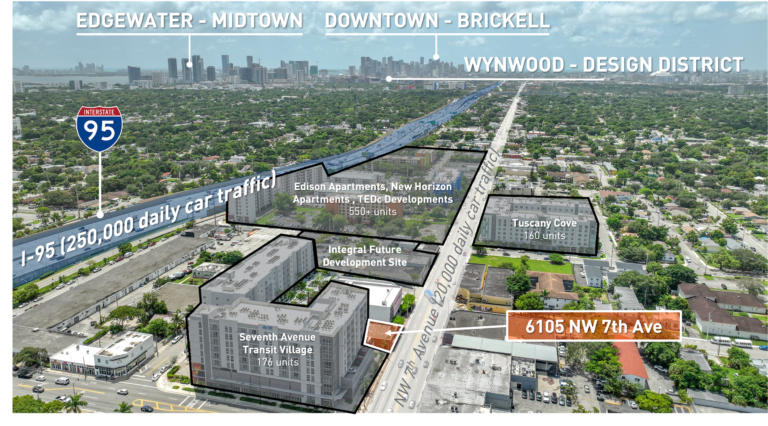The Federal Reserve, or “the Fed,” manages virtually the entire economy, including interest rates, inflation, and employment. Through its power to create or restrict credit, The Fed can exercise a very powerful influence over capitalization rates and property values in the real estate investment world. Understanding this process is critical to making well-informed investment decisions.
The Role of the Federal Reserve
The Federal Reserve conducts its operations using three primary tools to influence the economy: setting the federal funds rate, open-market operations, and quantitative easing. Probably, most directly impacting on real estate markets is the federal funds rate, the interest rate at which banks lend each other an overnight credit. Through the increase or decrease of this particular rate, the Fed is capable of managing the money supply, controlling inflation, and affecting economic growth.
For more on the inner workings of the Federal Reserve: https://www.concoda.com/
Cap Rates: The Basics
Cap rates are a key real estate investment measure, which represents the expected rate of return on an investment property. The capitalization rate is derived from dividing the net operating income of a property by its current market value.
Capitalization Rate = Net Operating Income of Property / Value of the Property
Lower cap rates generally reflect higher property values. This shows a competitive market with low risk. Inversely, higher cap rates indicate a high rate of risk and may, therefore, possibly reflect lower value for that property.
The Role the Fed Plays in Interest Rates and Cap Rates
The modification in the federal funds rate due to activity by the Federal Reserve leads to changes in mortgage rates and borrowing costs applicable to real estate acquisition. A few of the ways these changes could impact cap rates and property values:
- Increases in Interest Rate: The borrowing costs for real estate investors increase proportionally when the Fed raises interest rates. High interest rates mean high financing costs for new acquisitions and may lead to a fall in property demand. As demand begins to wane, so too does the property’s value, usually implying increased cap rates. Increased cost of borrowing means investors will need higher returns to compensate for the perceived risk in the market.
- Interest Rate Cuts: On the other hand, when the Fed lowers the interest rate, borrowing becomes cheaper, which can drive up the demand for real estate as investors and homeowners obtain lower financing fees. High demand tends to drive property values high; this results in low cap rates as competition is rife and risk, in this case, lowers.
Inflation and Real Estate Values
Inflation is yet another essential component affected by monetary policy implementation by the Fed.
Loosening by the Fed introduces or encourages inflation. Real estate is considered a good hedge against inflation because, during these times, property values usually go up, leading to higher rents over time. But if inflation hikes too fast, interest rates will spike, causing the Fed to raise them as a measure against inflation. This feeds into the cycle and further complicates the relationship between inflation, cap rates, and property values.
Quantitative Easing and Real Estate
Quantitative easing—buying long-duration securities by the Fed usually increases the money supply and brings interest rates down. Its impacts on real estate markets include:
- Lower Long-Term Interest Rates: Buying long-term securities, the Fed can bring down the interest rate of long-term securities by availing cheap mortgages and long-term loans. This often spurs real estate investment, leading to higher property values and lower cap rates.
- Increased Liquidity: QE raises the money supply and its velocity in an economy. Because more money keeps circulating with investors, a higher propensity is noticed for investing in real estate—this pushes up the property values and, in turn, compresses cap rates.
Market Sentiment and Fed Policies
The policies formulated by the Fed greatly influence investor sentiment. A bullish investor sentiment might be caused by expecting a dovish stance of the Fed since real estate values are projected to go up under this case, and cap rates are to be suppressed. In turn, if a hawkish stance is signaled, giving off a bearish sentiment, investors will project higher cap rates and lower property values because of increased borrowing costs emanating from higher rates and fears of slowing down the economy.
Real World Implications for Investors
Real estate investors have to keep themselves informed on what the Fed is currently doing so that they may make the appropriate decisions. Here’s what they should do:
- Follow Fed Announcements: Keep up to date with announcements and policies from the Federal Reserve. Being aware of what the trend in Fed behavior is likely going to be will help you forecast any adjustment to interest rates and what such adjustments are going to be concerning how they impact cap rates and property values.
- Diversify Your Portfolio: Diversification can help mitigate the risks associated with fluctuating interest rates and economic conditions. Consider a mix of property types and locations to spread risk.
- Focus on Cash Flow: Real estate that has a strong cash flow is valued more in periods of rising interest rates. The best investments are those that give you stability with constant income, which will protect against potential declines in property value. 4. Leverage Fixed-Rate Financing: Low fixed-rate financing may be locked in to guard against interest rate increases down the road. This can keep profitability intact in the event of an increase in borrowing costs. ### Conclusion \”Don’t fight the Fed\”—it’s good advice to those investing in property. With its sweeping power in dictating interest rates and levels of inflation and finally steering economic sentiment, the Federal Reserve plays such a dramatic role—everything that deeply affects cap rates and, hence, property values. With this knowledge will investors will them able to negotiate the complexities of the real estate market and stay responsive to policy changes, hence strategic. Whether you are an old-time investor or just new to this market, it is essential to keep an eye on the Fed to optimize your real estate investments.






